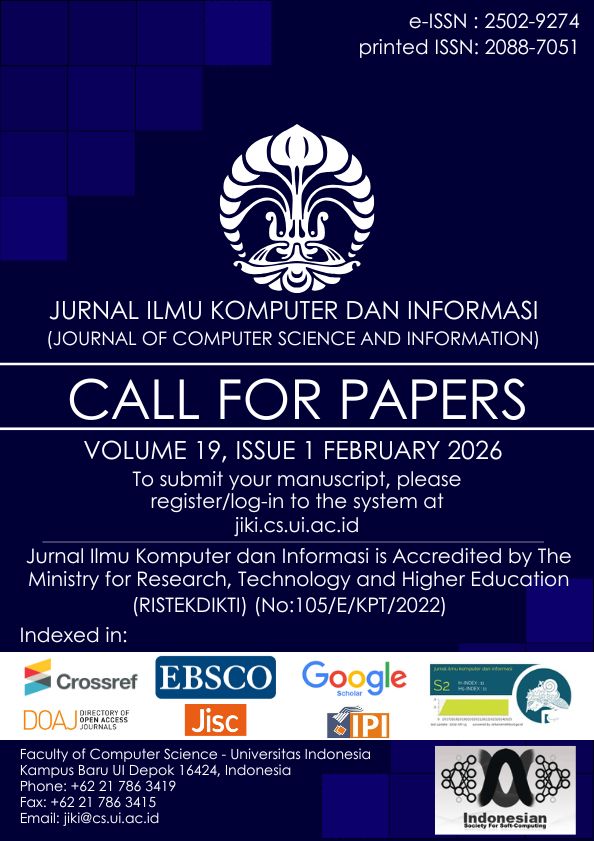Classification of Coffee Fruit Maturity Level based on Multispectral Image Using Naïve Bayes Method
DOI:
https://doi.org/10.21609/jiki.v17i2.1181Abstract
The current research about the classification of coffee fruit ripeness based on multispectral images has been developed using the Convolutional Neural Network (CNN) method to extract patterns from highdimensional multispectral images. The high complexity of CNN allows the model to capture complex features but requires more time and computational resources for model training and testing. Therefore, in this study, classification is performed using a more straightforward method such as Naïve Bayes because its complexity only depends on the number of features and samples. The method only considers each feature independently, so it has high speed and does not require a lot of computational resources. Naïve Bayes is applied to color and texture features extracted from multispectral images of coffee fruit. There are 300 features consisting of 60 color features and 240 texture features. Experiments were conducted based on the comparison of training and testing data and the use of each feature. The combination of color and texture features showed better performance than color or texture features alone, with the highest accuracy reaching 91.01%. In conclusion, using Naïve Bayes is still reasonably good in classifying the ripeness of coffee fruit based on multispectral images.
Downloads
Published
How to Cite
Issue
Section
License
Authors who publish with this journal agree to the following terms:
- Authors retain copyright and grant the journal right of first publication with the work simultaneously licensed under a Creative Commons Attribution License that allows others to share the work with an acknowledgement of the work's authorship and initial publication in this journal.
- Authors are able to enter into separate, additional contractual arrangements for the non-exclusive distribution of the journal's published version of the work (e.g., post it to an institutional repository or publish it in a book), with an acknowledgement of its initial publication in this journal.
- Authors are permitted and encouraged to post their work online (e.g., in institutional repositories or on their website) prior to and during the submission process, as it can lead to productive exchanges, as well as earlier and greater citation of published work (See The Effect of Open Access).










